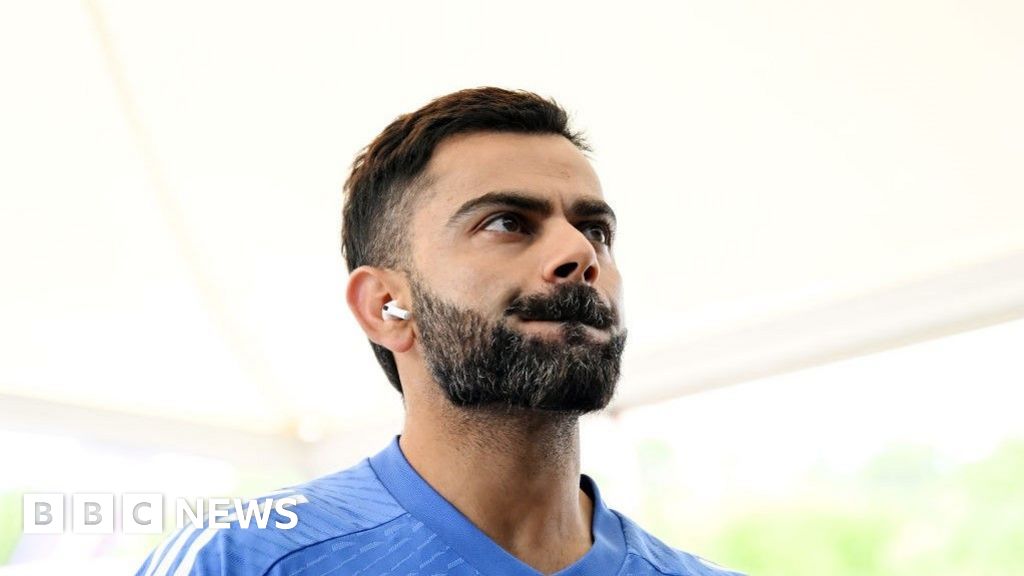


In 2011, the last time India won a cricket World Cup, everybody knew it would be batter Sachin Tendulkar’s final chance.
He was 39, it was his sixth attempt, and the team’s unofficial slogan was “Let’s do it for Sachin”.
After skipper Mahendra Singh Dhoni hit the winning six, Virat Kohli, who was among those who carried Tendulkar on their shoulders, said memorably, “He has carried our batting on his shoulders for so long, it is time we carried him on our shoulders.”
And now Kohli, Tendulkar’s natural successor who turns 36 this year, is in the twilight of his own career.
The next T20 World Cup is in 2026, and the 50-over version in 2027. Kohli is fitter than Tendulkar was, but it is difficult to see him play white ball cricket at that level again. Captain Rohit Sharma, 37, might be playing his last World Cup too.
There has been no “Let’s do it for Kohli” or “Let’s do it for Rohit” cry in the Indian team, unless these have been done more discreetly than before. Perhaps there is a “Let’s do it for [Rahul] Dravid,” lingering in the air. For the Indian coach, who missed the 2011 World Cup, this is his final assignment with the national team.
Image source, Getty Images
Increasingly, T20 is turning into a young man’s game, a young man who can’t be bothered about personal statistics, but is focused on where his next six is coming from. This is a cultural change in Indian cricket that is going unnoticed – too many big players in the past have shown an unhealthy concern about how they look in the record books where figures stand shorn of context.
Sharma’s stunning 92 against Australia pointed out to the next generation how strike rates mattered more than averages in T20. When Tendulkar made his 100th international century it was much lauded. But India lost the match.
India’s white ball team – especially in T20 – is in transition. Ten members of this squad are over 30, three above 35. And more determined hitters are coming through the system.
Shubhman Gill is leading an Indian T20 squad to Zimbabwe for a five-match T20 series next month. India’s future is represented there, with the likes of Yashasvi Jaiswal (unlucky not to play in the T20 World Cup, although he might still do so), Riyan Parag, Abhishek Sharma, Dhruv Jurel, Nitish Kumar, Ravi Bishnoi, all under 25, and Rinku Singh a shade over.
Image source, Getty Images
The over-35s in the current squad in the West Indies include Ravindra Jadeja, while Suryakumar Yadav, the top batter in the format approaches 34.
Age ought not to matter, form and fitness should decide. Yet, T20 is a tricky format. Experience might actually work against a player, where strategy and tactics move at great pace and yesterday’s philosophies no longer apply.
T20 was a different beast when Kohli and Sharma first began to make their mark on it.
That they have been able to keep pace with the likes of Suryakumar and Jaiswal (No 7 in the world) is a tribute to their adaptability. It is possible that one or both of them might call it quits after the current World Cup. If India win, they can’t go any higher and they would have moved aside after a triumph. If they lose, there will be pressure on them to make way. Sports can be cruel.
When India lost the 50-over World Cup in the final to Australia last year, the country went into mourning. The players were heartbroken, none more palpably than Kohli and Sharma who had both had a good tournament as India went into the final unbeaten. And then they fluffed it. Neither would get a ride on teammates shoulders. Each knew the chance might never come again.
Hence, the quest for redemption at the T20 World Cup. Somehow careers are deemed incomplete without a world crown, no matter what the format. A triumph is a happier starting point for transition.